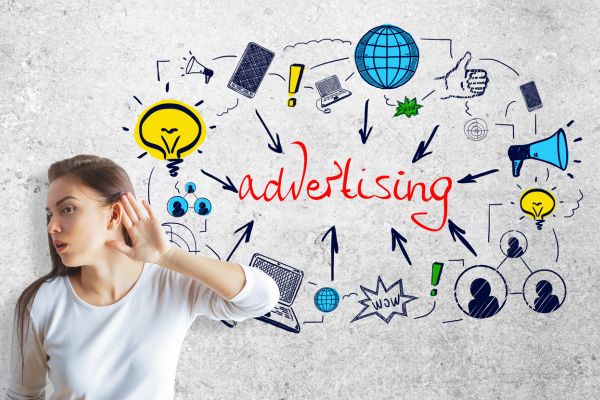Ah, digital advertising. The magical world where one minute you’re a business owner or marketer, and the next, you’re deep in the weeds of CPC, CPM, CPA, and a half-dozen other acronyms that sound like government agencies. If you’ve ever stared at your computer, coffee in hand, and wondered, “Do I really need a PhD in Ad Manager just to sell yoga mats?”—welcome to the club.
Digital advertising has become so complex that it often feels like an escape room designed by someone who really, really enjoys watching people squirm. You’ve got platforms, placements, audiences, ad formats, bid strategies, analytics dashboards, and the ever-mysterious “algorithm.” Just when you think you’ve got a handle on it, someone pipes up with, “Have you tried programmatic advertising yet?”
Spoiler alert: no, you haven’t. And you probably don’t even know what it is.
The Overwhelm Is Real—And It’s Not Your Fault
Let’s be real—digital advertising wasn’t always this complicated. A few years ago, you could throw up a boosted post on Facebook, target “people who like pizza,” and call it a day. But now, it’s like the platforms have conspired to turn simplicity into a relic of the past. You’re greeted with advanced targeting options like “Affinity Segments,” “Lookalike Audiences,” and “Custom In-Market Audiences for High-Intent Consumers Who Binge K-Dramas on Thursdays.” (Okay, maybe I made that last one up—but it feels plausible, right?)
Here’s the kicker: the industry thrives on this complexity. Platforms want you to spend money, consultants want to help you “navigate the labyrinth,” and advertisers feel compelled to stay ahead of the curve—or at least keep up with it. And while some tools and strategies genuinely help businesses grow, the sheer number of options can leave even the savviest marketers second-guessing their every move.
The Paradox of Choice: Too Many Options, Too Little Clarity
Remember that time you spent 20 minutes scrolling through Netflix, only to end up rewatching The Office because there were too many choices? That’s digital advertising in a nutshell.
You’ve got:
- Platforms: Facebook, Instagram, TikTok, Google, LinkedIn, Pinterest, Reddit…should I go on?
- Ad Formats: Stories, carousels, reels, search ads, display ads, shopping ads, native ads. (What even is a native ad, and why does it sound like it needs subtitles?)
- Metrics: Impressions, clicks, conversions, bounce rates, engagement rates, ROAS, LTV, CAC…Is this still marketing, or are we solving math problems at a hackathon?
This buffet of options should feel empowering, but instead, it leaves you wondering if you’re making the right choices. Should you spend more on Instagram Stories because they’re trending, or is your money better spent on Google search ads targeting keywords like “best yoga mats for slippery floors”? And don’t even get me started on trying to figure out what’s working. Every dashboard is a puzzle, and no two platforms seem to agree on what counts as a “conversion.”
The Real Problem: Shiny Object Syndrome
Here’s a hard truth: a lot of us get distracted by the latest trends in advertising. A new platform comes out (cough Threads), and suddenly, everyone’s asking, “Should we be running ads here?” Never mind that your core audience probably isn’t even using it yet. We’re so busy chasing the next big thing that we forget to focus on what’s already working—or, worse, we never give any one strategy enough time to succeed.
I get it. The fear of missing out is strong. You don’t want to be the last business on TikTok or the only one not running dynamic ads with personalized video overlays. But here’s the thing: you don’t have to do it all. And you definitely don’t have to do it all at once.
How to Keep Your Sanity in the Chaos
So, what’s the solution? Short of throwing your laptop out the window and declaring a life of digital minimalism, here are a few tips to cut through the noise:
- Start Small, Then Scale: Pick one or two platforms where your audience actually hangs out. Focus on nailing your strategy there before you branch out. (Hint: If you sell professional services, LinkedIn might be a better bet than TikTok.)
- Define Clear Goals: Are you looking for clicks, conversions, brand awareness, or just proof that your ads are actually showing up somewhere? Decide on one goal per campaign and stick to it.
- Ignore the Bells and Whistles (For Now): Yes, AI-generated ad copy and predictive analytics are cool, but they’re not essential for every campaign. Master the basics before you dive into advanced tactics.
- Hire Help if You Need It: Whether it’s a consultant, freelancer, or agency, sometimes outsourcing is worth it—if only to save your sanity.
- Give Yourself Grace: Digital advertising is hard. Even the pros don’t get it right 100% of the time. Every failed campaign is just another step toward figuring out what works.
Final Thoughts: You’re Not Alone
Feeling overwhelmed by digital advertising isn’t a sign of failure; it’s a sign that the landscape is ridiculously complicated. The good news? You don’t need to master every platform, strategy, and metric to see results. Focus on what feels manageable, test and tweak as you go, and remember—you’re not the only one wondering if the algorithm is laughing at you behind your back.
So, take a deep breath, sip that coffee, and remind yourself: you’re doing the best you can. Now go crush those ads—just maybe skip the in-market K-drama audience for now.

